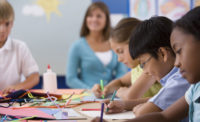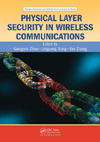When developing school safety plans, security leaders should consider the feelings of families and staff. A Motorola Solutions report from 1,000 K-12 parents and 1,000 K-12 educators across the United States. The research reveals the most pressing concerns for those closest to school safety and highlights their perceptions about emergency preparedness plans, communication practices, school safety technologies and training for teachers and students.
The data shows that 67% of both parents and teachers are much more concerned about school safety now than they were five years ago, even as 73% of parents and 80% of teachers are confident that their school’s emergency response plans are effective. When looking at schools, parents and teachers both rank school safety as a critical factor (66% for parents, 72% for teachers).
Sixty-four percent of parents and 68% of teachers are very or extremely concerned about students’ mental health. Additionally, parents and teachers are worried about the mental health of community members who may perpetrate acts of violence on a school campus and teachers’ mental health.
Nearly half of teachers (48%) say that they are able to submit anonymous or confidential tips to their school, public safety or both, compared to 43% of parents. In the event of an emergency, 57% of teachers indicate they would typically use a classroom phone to call the main office.
Seventy-one percent of teachers say that their school has adopted new safety technology in the last two years, but 54% of parents say they haven’t seen new technologies implemented. This disparity presents an opportunity for schools to periodically communicate with parents about the safety solutions they're implementing to reduce risk or expedite response. Almost half (46%) of parents say panic button apps that allow teachers and school staff to quickly notify 9-1-1 would increase their confidence in school safety.
Eighty-nine percent of parents say their child has participated in a school lockdown drill, with 96% of teachers reporting the same. Eighty-two percent of parents say their child has participated in a drill specifically for active shooter preparedness, while 73% of teachers have participated in such drills with students and another 10% without students. Thirty-six percent of teachers have not engaged in training with first responders but they want to.
.jpg?1691508893)








